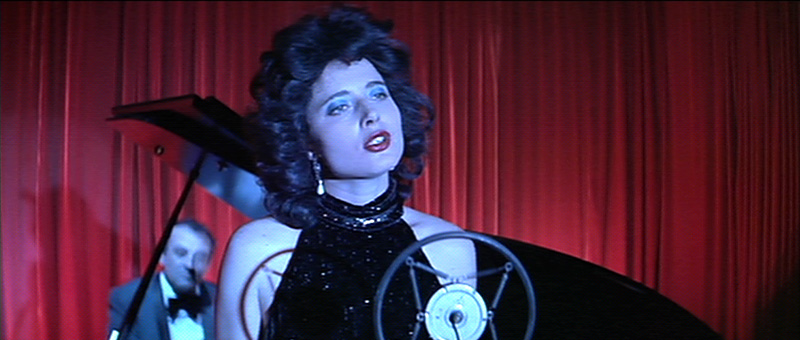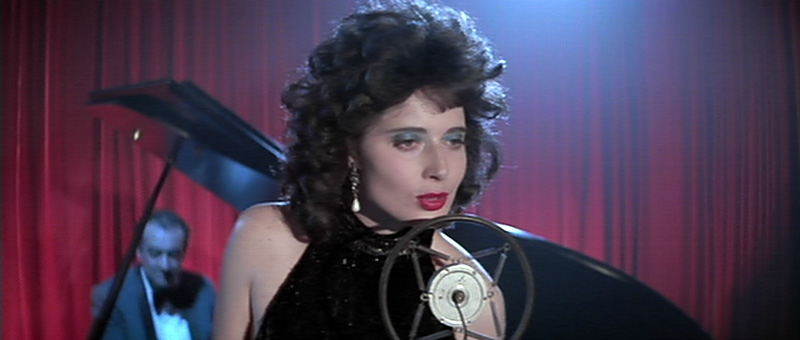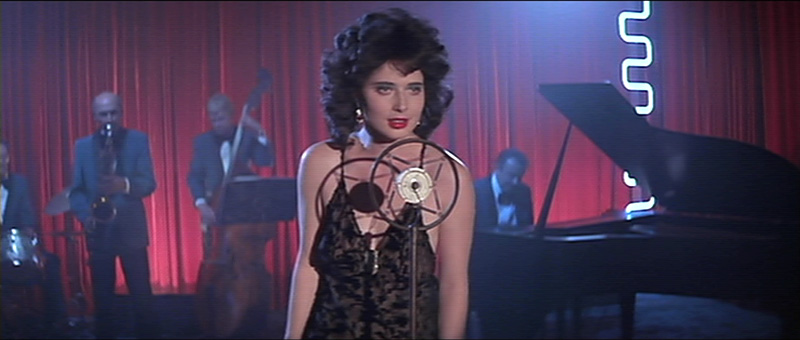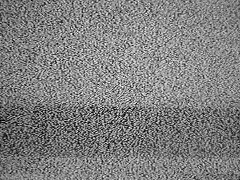








 The Thing is a science fiction horror film directed by John Carpenter, written by Bill Lancaster, and starring Kurt Russell. Ostensibly a remake of the 1951 Christian Nyby film The Thing from Another World, Carpenter's film is a more faithful adaptation of the novella Who Goes There? by John W. Campbell, Jr., which inspired the 1951 film. John Carpenter has always expressed his love of so-called b-movies and creature features from the 50s and 60s. An undoubted classic if this era was The Thing From Another World, directed by Christian Nyby and produced by JCs favourite director, Howard Hawks. This black and white film is a great example of 50s sci-fi and those films claimed to have been particularly influenced by the reds-under-the-bed hysteria surrounding the McCarthy era. The film manages to transcend it's man-in-a-rubber-suit origins and succeed in scaring the audience.
The Thing is a science fiction horror film directed by John Carpenter, written by Bill Lancaster, and starring Kurt Russell. Ostensibly a remake of the 1951 Christian Nyby film The Thing from Another World, Carpenter's film is a more faithful adaptation of the novella Who Goes There? by John W. Campbell, Jr., which inspired the 1951 film. John Carpenter has always expressed his love of so-called b-movies and creature features from the 50s and 60s. An undoubted classic if this era was The Thing From Another World, directed by Christian Nyby and produced by JCs favourite director, Howard Hawks. This black and white film is a great example of 50s sci-fi and those films claimed to have been particularly influenced by the reds-under-the-bed hysteria surrounding the McCarthy era. The film manages to transcend it's man-in-a-rubber-suit origins and succeed in scaring the audience. As cult movie soundtracks go, this is one of the all-time classics. Originally released in 1973, the animated sci-fi film "La Planete Sauvage" (AKA "Fantastic Planet" in U.S. release) featured an incredibly stoned-out "psych jazz funk orchestral" soundtrack created by the Frenchman Alain Goraguer. Prior to the "La Planete Sauvage" soundtrack, Goraguer worked extensively with Serge Gainsbourg, but this was the moment where he truly stepped out on his own. The music is all based on one theme, so listening to the entire soundtrack CD can get a little repetitive after awhile... I picked out two of the best and most influential highlights for your MP3 download needs (although go ahead and grab the whole thing if you can't get enough wah-wah pedal and flute action). To say this soundtrack has been influential is an understatement... the track "Le Bracelet" in particular has been sampled many times in hip-hop songs, such as Big Pun's "Boomerang" and The Rascalzs' "Soul Obligation." Madlib's first "Quasimoto" record was entirely built around "La Planete Sauvage" samples and homages. The band Air has also listed this soundtrack as a key influence on their work, particularly for the "Virgin Suicides" soundtrack... in fact, one could argue that the Goraguer track "La Femme" offers a blueprint for the entire chilled-out psych-funk style of Air's music in general. Take a trip to this far-out planet and you will not be disappointed...
As cult movie soundtracks go, this is one of the all-time classics. Originally released in 1973, the animated sci-fi film "La Planete Sauvage" (AKA "Fantastic Planet" in U.S. release) featured an incredibly stoned-out "psych jazz funk orchestral" soundtrack created by the Frenchman Alain Goraguer. Prior to the "La Planete Sauvage" soundtrack, Goraguer worked extensively with Serge Gainsbourg, but this was the moment where he truly stepped out on his own. The music is all based on one theme, so listening to the entire soundtrack CD can get a little repetitive after awhile... I picked out two of the best and most influential highlights for your MP3 download needs (although go ahead and grab the whole thing if you can't get enough wah-wah pedal and flute action). To say this soundtrack has been influential is an understatement... the track "Le Bracelet" in particular has been sampled many times in hip-hop songs, such as Big Pun's "Boomerang" and The Rascalzs' "Soul Obligation." Madlib's first "Quasimoto" record was entirely built around "La Planete Sauvage" samples and homages. The band Air has also listed this soundtrack as a key influence on their work, particularly for the "Virgin Suicides" soundtrack... in fact, one could argue that the Goraguer track "La Femme" offers a blueprint for the entire chilled-out psych-funk style of Air's music in general. Take a trip to this far-out planet and you will not be disappointed... Fantastic Planet (French: La Planète sauvage, lit. The Savage Planet) is an animated film directed by René Laloux. The film was an international production between France and Czechoslovakia and has been distributed in the United States by Roger Corman. It won the special jury prize at the Cannes Film Festival in 1973. The story is based on the novel Oms en Série, by the French writer Stefan Wul. This film takes place on a faraway planet where giants rule, and tiny humanoids must fight for their lives and their equality. A metaphor of class struggles. La Planète sauvage AKA Fantastic Planet is a surrealist story based on the Soviet occupation of Czechoslovakia. Set in a far distant world human beings or "Oms"have been domesticated by the gigantic Draags. Wild Oms however are a problem and are exterminated by the dozen. One domesticated om Terr is able to escape his masters with a headset that puts information directly into the brain. Armed now with the Draags technology he leads the Oms in an attempt to make life better for them...But will the deomizing destroy them? More...
Fantastic Planet (French: La Planète sauvage, lit. The Savage Planet) is an animated film directed by René Laloux. The film was an international production between France and Czechoslovakia and has been distributed in the United States by Roger Corman. It won the special jury prize at the Cannes Film Festival in 1973. The story is based on the novel Oms en Série, by the French writer Stefan Wul. This film takes place on a faraway planet where giants rule, and tiny humanoids must fight for their lives and their equality. A metaphor of class struggles. La Planète sauvage AKA Fantastic Planet is a surrealist story based on the Soviet occupation of Czechoslovakia. Set in a far distant world human beings or "Oms"have been domesticated by the gigantic Draags. Wild Oms however are a problem and are exterminated by the dozen. One domesticated om Terr is able to escape his masters with a headset that puts information directly into the brain. Armed now with the Draags technology he leads the Oms in an attempt to make life better for them...But will the deomizing destroy them? More...He is thrown back to the past again and again. He repeatedly meets and speaks to the woman who was present at the terminal. After his successful passages to the past, the experimenters attempt to send him into the far future. In a brief meeting with the technologically advanced people of the future, he is given a power unit sufficient to regenerate his own destroyed society. On his return, he is cast aside by his jailers to die. Before he can be executed, he is contacted by the people of the future, who offer to help him escape to their time, but he asks to be returned to the time of his childhood. He is returned, only to find the violent incident he partially witnessed as a child was his own death as an adult.
Download links: 1 2 or 1 2 3 subs (pass: cphx)

 Howard Shore again masters the mood with this foray into the seamy underworld of William Burroughs. In this story about a place called Interzone, full of sinister centipedes and slimy "mugwumps," there is nothing better at giving listeners the creepy-crawlies than the depressing styles of what many could instantly identify as "beatnik" jazz. This is the music Burroughs and cronies like Allen Ginsberg cultivated to forge an anti-white-bread counterculture that was Ozzie and Harriet's worst nightmare. Shore re-creates this music as Ward Cleaver might have heard it way back when. To be even more authentic to the period, he collaborates with Ornette Coleman and also incorporates the Thelonious Monk composition "Misterioso." This soundtrack's best moments, however, occur when Shore drops the beat pose and just shines darkly.Bug music! At the time of its 1992 release, this soundtrack to David Cronenberg's adaptation of William S. Burrough's phantasmagorical beat epic marked a slight return from what had been a long layoff for Ornette Coleman. The saxophonist was an inspired choice for the film, which, among other things, follows an erstwhile exterminator's journey from New York City to Tangiers. The soundtrack parallels Coleman's own travels as well: symphonic collaborations and Third Stream evocations, melodic and furious "free jazz" sorties, and meetings with masters of ecstatic North African traditional music.
Howard Shore again masters the mood with this foray into the seamy underworld of William Burroughs. In this story about a place called Interzone, full of sinister centipedes and slimy "mugwumps," there is nothing better at giving listeners the creepy-crawlies than the depressing styles of what many could instantly identify as "beatnik" jazz. This is the music Burroughs and cronies like Allen Ginsberg cultivated to forge an anti-white-bread counterculture that was Ozzie and Harriet's worst nightmare. Shore re-creates this music as Ward Cleaver might have heard it way back when. To be even more authentic to the period, he collaborates with Ornette Coleman and also incorporates the Thelonious Monk composition "Misterioso." This soundtrack's best moments, however, occur when Shore drops the beat pose and just shines darkly.Bug music! At the time of its 1992 release, this soundtrack to David Cronenberg's adaptation of William S. Burrough's phantasmagorical beat epic marked a slight return from what had been a long layoff for Ornette Coleman. The saxophonist was an inspired choice for the film, which, among other things, follows an erstwhile exterminator's journey from New York City to Tangiers. The soundtrack parallels Coleman's own travels as well: symphonic collaborations and Third Stream evocations, melodic and furious "free jazz" sorties, and meetings with masters of ecstatic North African traditional music. The second video, Za ginipiggu 2: Chiniku no hana is said to be based on a snuff film sent to the director Hideshi Hino by a crazed fan. In it, a man dressed as a samurai drugs a woman and proceeds to cut her apart, and finally adds her body parts to an extensive collection. The snuff film rumour has been shown to be a contemporary legend; the film was in fact based on a manga about a florist who kills women and uses their dismembered parts as the seed of his beautiful flower arrangements. Most of this element of the story is cut out for the making of Guinea Pig due to the low budget and need of shock value. In fact, the actor playing the killer is the creator of the 1970s manga from which the story is derived.
The second video, Za ginipiggu 2: Chiniku no hana is said to be based on a snuff film sent to the director Hideshi Hino by a crazed fan. In it, a man dressed as a samurai drugs a woman and proceeds to cut her apart, and finally adds her body parts to an extensive collection. The snuff film rumour has been shown to be a contemporary legend; the film was in fact based on a manga about a florist who kills women and uses their dismembered parts as the seed of his beautiful flower arrangements. Most of this element of the story is cut out for the making of Guinea Pig due to the low budget and need of shock value. In fact, the actor playing the killer is the creator of the 1970s manga from which the story is derived.
An Andalusian Dog is a sixteen-minute surrealist film made in France in 1928 by spanish writer-directors Luis Bunuel and Salvador Dali, and released in 1929 in Paris. It is one of the best known surrealist films of the French avant-garde film movement of the 1920s. It is also considered one of the most prominent films in spanish surrealism. It stars Simone Mareuil and Pierre Batcheff as the unnamed protagonists.
 "Devil's Experiment" is the first in the controversial Japanese "Guinea Pig" series. Eschewing any form of story, it is 42 minutes of three mysterious Japanese men torturing a helpless woman. From the get go you should be able to tell if this is your bag or not, but I will press on. The film is divided into segments, each one detailing a different form of torture and severe pain inflicted on the woman. It starts off simple enough, with the first two sections being titled "Hit" and "Kick" respectively. It's easy to guess what goes on in these portions, but for the slower to draw, the woman gets slapped in the face a couple hundred times, then kicked while writhing on the floor and being yelled at. Nothing too severe. At this point, I realized I was surely up to the task at hand, and bravely pushed myself forward.
"Devil's Experiment" is the first in the controversial Japanese "Guinea Pig" series. Eschewing any form of story, it is 42 minutes of three mysterious Japanese men torturing a helpless woman. From the get go you should be able to tell if this is your bag or not, but I will press on. The film is divided into segments, each one detailing a different form of torture and severe pain inflicted on the woman. It starts off simple enough, with the first two sections being titled "Hit" and "Kick" respectively. It's easy to guess what goes on in these portions, but for the slower to draw, the woman gets slapped in the face a couple hundred times, then kicked while writhing on the floor and being yelled at. Nothing too severe. At this point, I realized I was surely up to the task at hand, and bravely pushed myself forward. Wicked City (Yôjû toshi) is an animated horror neo-noir directed by Yoshiaki Kawajiri, based on Hideyuki Kikuchi's novel of the same name. In a sense Wicked City is a fascinating title to revisit for those interested in the evolution of Japanese animation. For starters it represents the conjunction and culmination of several strains of 80s fantasy cinema. Phallic tentacles sprout from chests plunging into flesh, bodies twist and split in two, heads fly off and eyeballs explode from their sockets. In an early scene, a raven-haired temptress picked up casually from a bar writhes in post-coital bliss, her limbs elongating and entwining her victim as she assumes the form of a spider before they part to reveal a Venus Flytrap-like vulva arrayed with fangs, the overt manifestation of Freud's most deep-rooted and primal male fear, the vagina dentata. They certainly don't make them like this any more, and certainly not as feature-length cartoons...
Wicked City (Yôjû toshi) is an animated horror neo-noir directed by Yoshiaki Kawajiri, based on Hideyuki Kikuchi's novel of the same name. In a sense Wicked City is a fascinating title to revisit for those interested in the evolution of Japanese animation. For starters it represents the conjunction and culmination of several strains of 80s fantasy cinema. Phallic tentacles sprout from chests plunging into flesh, bodies twist and split in two, heads fly off and eyeballs explode from their sockets. In an early scene, a raven-haired temptress picked up casually from a bar writhes in post-coital bliss, her limbs elongating and entwining her victim as she assumes the form of a spider before they part to reveal a Venus Flytrap-like vulva arrayed with fangs, the overt manifestation of Freud's most deep-rooted and primal male fear, the vagina dentata. They certainly don't make them like this any more, and certainly not as feature-length cartoons...


 One of God's own prototypes - a high powered mutant of some kind never even considered for mass production. Too weird to live and too rare to die.
One of God's own prototypes - a high powered mutant of some kind never even considered for mass production. Too weird to live and too rare to die.

